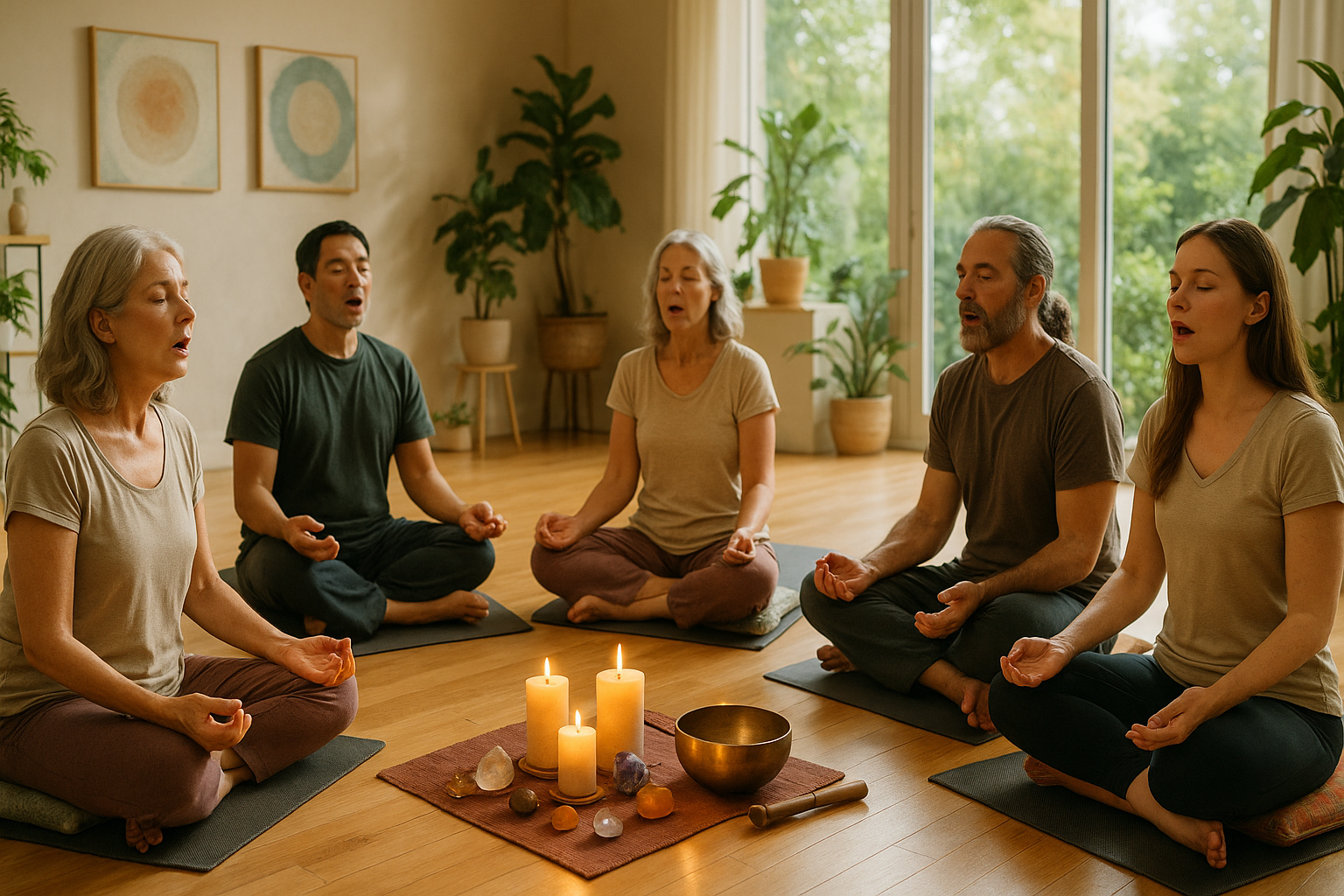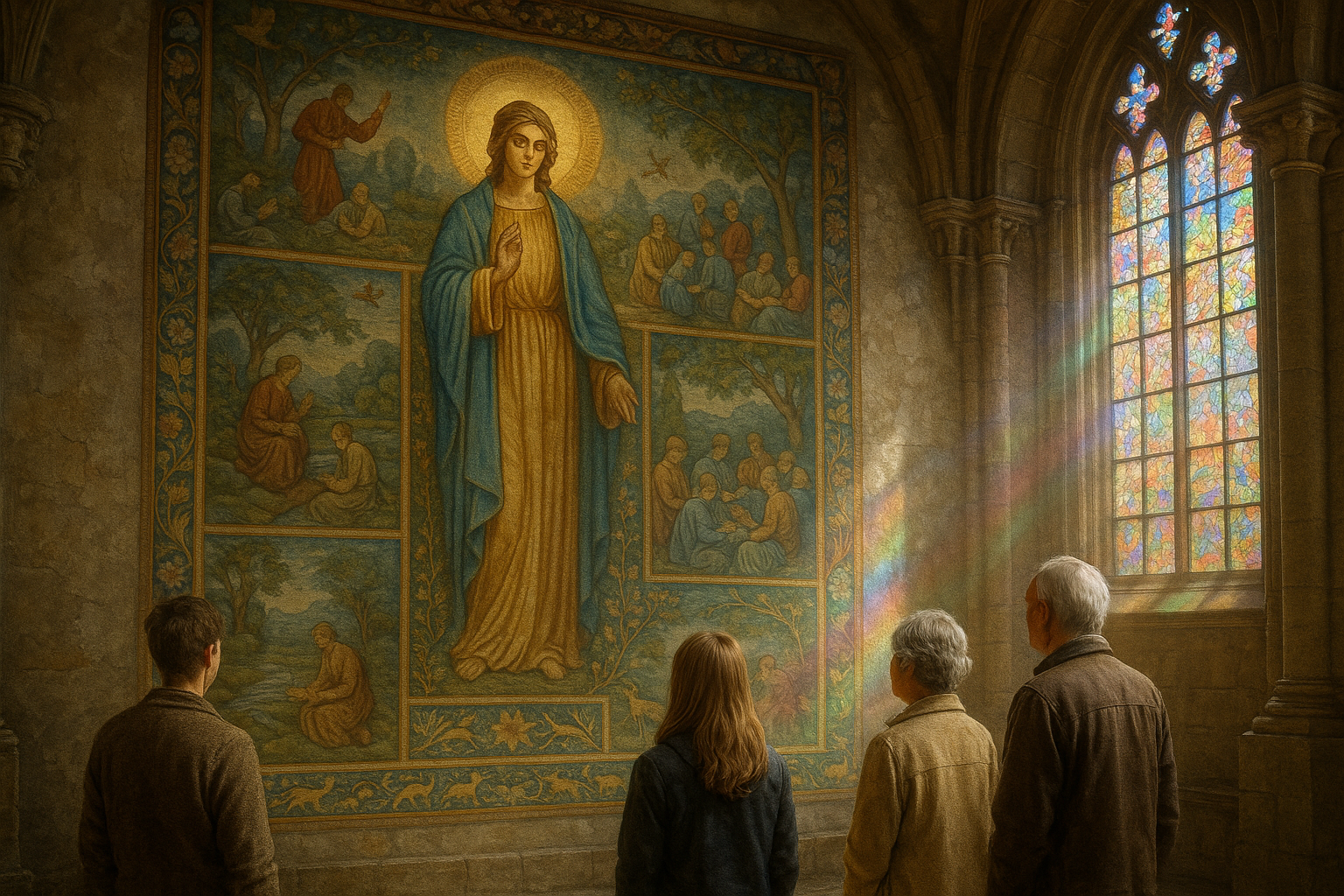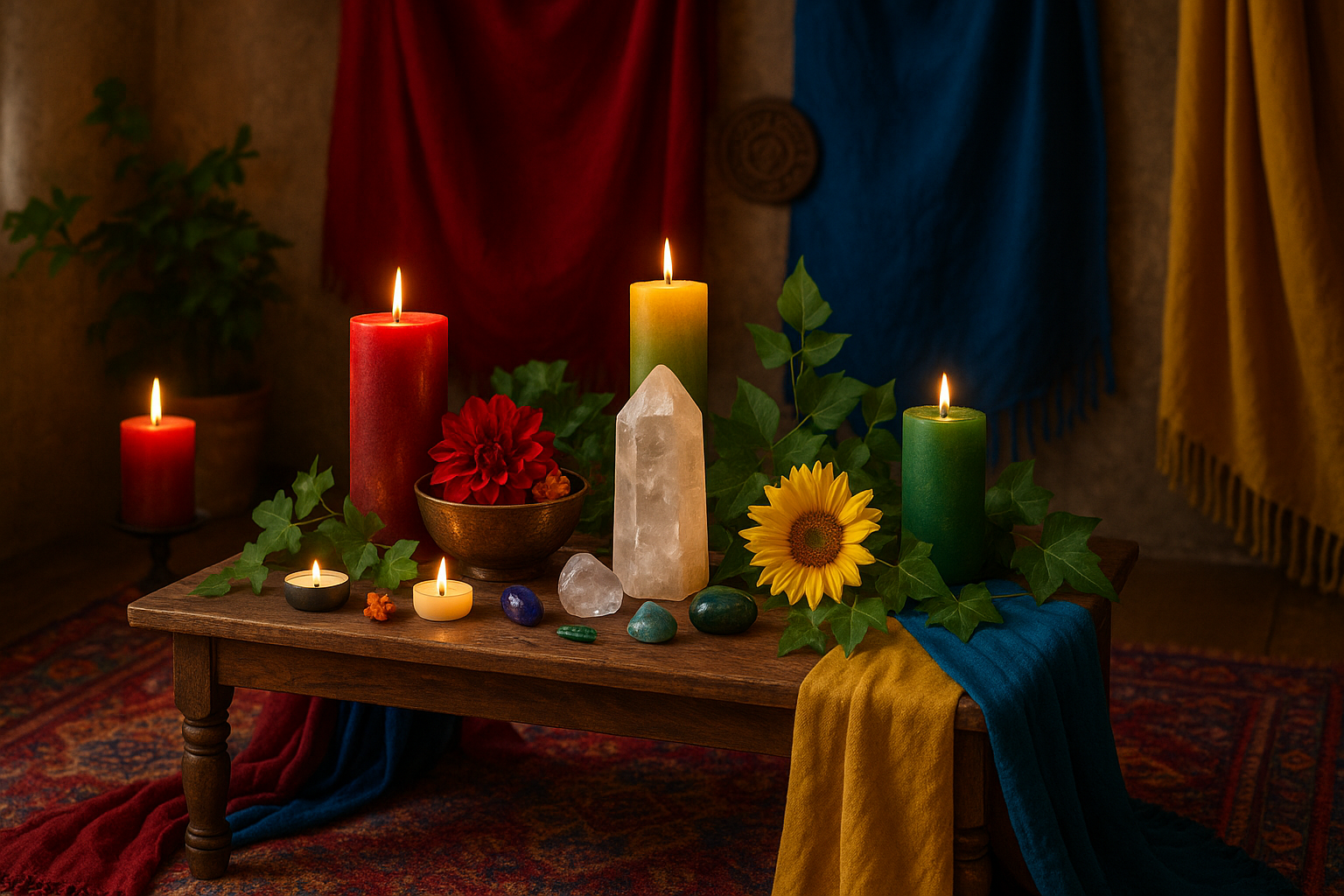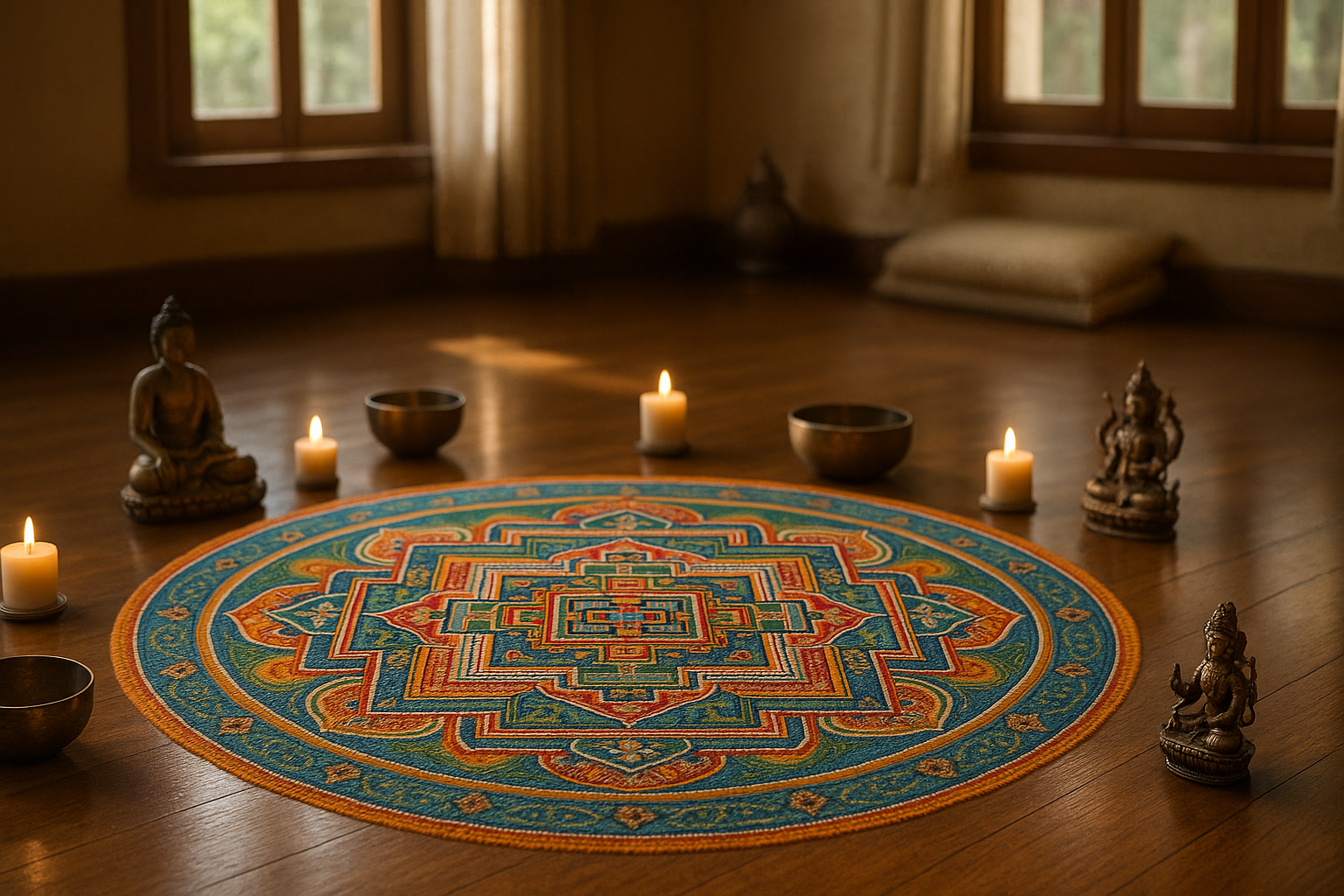In the heart of human creativity lies a profound connection to the universe, a connection that has been explored and expressed through various forms of art throughout history. Among these forms, sacred geometry stands out as a fascinating blend of science and spirituality, art and mathematics. It is the hidden language of the cosmos, whispered through shapes, patterns, and proportions that have captivated human imagination for millennia. Whether it’s the intricate designs of ancient temples or the harmonious compositions in modern art, sacred geometry serves as a testament to the beauty and order of the natural world. In this blog, we embark on a journey to unravel the mysteries of sacred geometry, particularly as it manifests in the vibrant and expressive world of mural art. 🌟
Mural art, with its expansive canvases and public accessibility, provides a unique opportunity to explore the principles of sacred geometry on a grand scale. Artists have long employed geometric proportions to evoke a sense of balance, harmony, and transcendence in their work, inviting viewers to see beyond the mere physicality of shapes and into the realm of the metaphysical. From the Golden Ratio to the Flower of Life, these geometric principles have been used not only to enhance aesthetic appeal but also to convey deeper spiritual truths. As we delve into this topic, we’ll uncover how muralists around the world incorporate these ancient principles into their creations, transforming public spaces into sanctuaries of contemplation and wonder. 🌍
In this exploration, we’ll discuss the historical roots of sacred geometry, tracing its influence from ancient civilizations to contemporary street art. We’ll examine how different cultures have interpreted and applied these geometric principles in their art and architecture, creating a tapestry of visual storytelling that transcends time and space. Furthermore, we’ll explore the psychological and emotional impact of sacred geometry in mural art, considering how these designs can inspire a sense of peace, awe, and connectivity in those who encounter them. By the end of this article, you will not only gain a deeper appreciation for the intricate relationship between geometry and art but also a renewed sense of wonder for the world around you. Join us as we unlock the power of sacred geometry and discover the timeless beauty that lies within proportions. 🎨✨
The Ancient Origins of Sacred Geometry in Mural Art
Sacred geometry is a concept that has fascinated civilizations throughout history, permeating diverse cultures with its mystical allure. It refers to the mathematical principles that underlie the universe, considered divine in their harmony and balance. The application of sacred geometry in mural art dates back millennia, from the intricate murals of ancient Egypt to the frescos of Renaissance cathedrals. These artworks harness specific geometric proportions and patterns to convey spiritual and philosophical messages, inviting viewers to explore the cosmos through the lens of art.
The roots of sacred geometry are deep-seated in ancient traditions. In Egypt, the use of geometry in art and architecture was not merely for aesthetic purposes but also served a spiritual function. The pyramids, for instance, embody sacred proportions believed to reflect the universe’s order. Murals in tombs and temples depicted gods and pharaohs with precise geometric alignment, underscoring their divine nature. Similarly, in ancient Greece, the concept of the Golden Ratio (approximately 1.618) emerged, deeply influencing art and architecture. This ratio, considered the epitome of beauty and harmony, became a foundational element in Western art, including murals.
Throughout history, artists have used sacred geometry to imbue their works with a sense of the divine. The Renaissance marked a period where the revival of classical knowledge, including geometric principles, flourished. Artists like Leonardo da Vinci and Michelangelo integrated these principles into their murals, seeking to reflect the perfection of the cosmos. In Eastern traditions, such as Hinduism and Buddhism, mandalas are a prevalent form of sacred geometric art. These intricate designs serve as spiritual symbols, representing the universe in a microcosm. Through these diverse cultural lenses, sacred geometry continues to influence mural art, offering viewers a gateway to deeper understanding.
Principles of Sacred Geometry: The Building Blocks of Mural Art
Sacred geometry is founded on several key principles, each contributing to the overall harmony and balance in art. These principles include symmetry, proportion, and the use of specific shapes such as circles, squares, and triangles. These shapes are not chosen arbitrarily; each has its symbolic significance and is believed to channel energy and focus in a particular way. Symmetry, for example, represents balance and equality, often associated with spiritual enlightenment. In mural art, symmetry is used to create a sense of order and stability, guiding the viewer’s eye seamlessly across the artwork.
The Golden Ratio, or Phi, is one of the most revered principles of sacred geometry. It is a mathematical ratio that appears throughout nature, from the spirals of shells to the arrangement of leaves on a stem. Artists have long utilized this ratio to create compositions that are aesthetically pleasing and resonate with viewers on a subconscious level. In mural art, the Golden Ratio can be observed in the layout of elements, ensuring that each component of the mural harmonizes with the whole. This proportion is believed to reflect the intrinsic beauty of the universe, offering viewers a glimpse into the divine order.
Additionally, the use of specific shapes plays a crucial role in sacred geometry. Circles, for instance, symbolize unity and infinity, representing the cycles of life and the universe. Squares, with their equal sides, embody stability and foundation, often used to convey earthly matters. Triangles, pointing upwards, signify aspiration and spiritual growth. By incorporating these shapes into murals, artists can evoke particular emotions and thoughts, encouraging viewers to explore the deeper meanings behind the art. This use of sacred geometry transforms mural art from mere decoration to a profound spiritual experience.
Exploring the Spiritual Significance of Sacred Geometry in Murals
Sacred geometry in murals is not just about aesthetics; it carries a deeper spiritual significance. Each geometric shape and proportion is imbued with symbolic meaning, resonating with viewers on a subconscious level. These symbols are often used to convey complex philosophical and spiritual concepts, inviting contemplation and introspection. For instance, the mandala, a common element in Hindu and Buddhist art, is a circular design that represents the universe. Within murals, mandalas serve as focal points, guiding viewers on a journey of self-discovery and enlightenment.
The spiritual significance of sacred geometry is not limited to Eastern traditions. In Christian art, geometric patterns are used to depict divine harmony and order. The use of circles and crosses, for example, can be seen in many medieval murals, symbolizing the infinite nature of God and the intersection of the earthly and divine. These patterns are not merely decorative; they are meant to inspire spiritual reflection and connection with the divine. By engaging with these artworks, viewers can experience a sense of transcendence, connecting with something greater than themselves.
Sacred geometry also plays a role in the holistic healing practices of various cultures. It is believed that geometric patterns can influence the energy fields of a space, promoting harmony and balance. In this context, murals featuring sacred geometry are not just visual art; they are tools for transformation and healing. By surrounding themselves with these patterns, individuals can enhance their spiritual well-being, aligning their energies with the universe. This interplay between art and spirituality underscores the profound impact of sacred geometry in mural art, offering viewers a pathway to personal and spiritual growth.
Table: Common Geometric Shapes and Their Meanings in Sacred Geometry
| Shape | Meaning |
|---|---|
| Circle | Unity, Infinity, Wholeness |
| Square | Stability, Foundation, Earthly Matters |
| Triangle | Aspiration, Spiritual Growth, Balance |
| Spiral | Growth, Evolution, Transformation |
For a deeper understanding of how sacred geometry influences art, watch this insightful video on YouTube: “The Hidden Meaning of Sacred Geometry” by The Spirit Science.
The Modern Revival of Sacred Geometry in Contemporary Mural Art
In recent years, there has been a resurgence of interest in sacred geometry, particularly in the realm of contemporary mural art. This revival is part of a broader movement that seeks to reconnect with ancient wisdom and integrate it into modern artistic expressions. Contemporary artists are increasingly exploring the use of sacred geometry to convey messages of unity, interconnectedness, and spiritual awakening. This trend reflects a growing desire for art that goes beyond aesthetics, offering viewers a deeper understanding of themselves and the world around them.
Contemporary muralists are incorporating sacred geometry into their work in innovative ways, blending traditional techniques with modern technology. Digital tools allow artists to experiment with complex geometric patterns, creating murals that are both visually stunning and spiritually resonant. These artworks often feature bold colors and intricate designs, capturing the viewer’s attention and inviting contemplation. By drawing on the principles of sacred geometry, contemporary artists are able to create murals that resonate with audiences on a profound level, transcending cultural and linguistic barriers.
Moreover, the modern revival of sacred geometry in mural art is closely linked to environmental and social themes. Many artists use these geometric patterns to draw attention to issues such as climate change, social justice, and the interconnectedness of all life. By embedding these messages within their art, muralists encourage viewers to reflect on their own role in the world and inspire action towards positive change. This blending of ancient wisdom with contemporary concerns highlights the enduring relevance of sacred geometry, offering a powerful tool for both artistic expression and social transformation.
The Role of Technology in Enhancing Sacred Geometry in Mural Art
The integration of technology into the creation of sacred geometric murals has opened up new possibilities for artists. Advanced software allows for the precise calculation and rendering of complex geometric patterns, enabling artists to explore designs that were previously impossible to achieve by hand. This technological advancement has expanded the scope of what can be achieved in mural art, allowing for more intricate and detailed works that captivate audiences with their complexity and beauty.
Virtual reality (VR) and augmented reality (AR) are also being used to enhance the experience of sacred geometry in mural art. These technologies enable viewers to engage with murals in an immersive way, exploring the artwork from different perspectives and gaining a deeper understanding of its geometric intricacies. By using VR and AR, artists can create interactive experiences that invite viewers to explore the spiritual dimensions of their work, fostering a deeper connection between the audience and the art.
Overall, the modern revival of sacred geometry in contemporary mural art represents a fusion of ancient wisdom and cutting-edge technology. This combination allows artists to create works that are not only visually stunning but also rich in meaning and significance. As more artists continue to explore the possibilities of sacred geometry, mural art will continue to evolve, offering new insights and inspiration for generations to come.
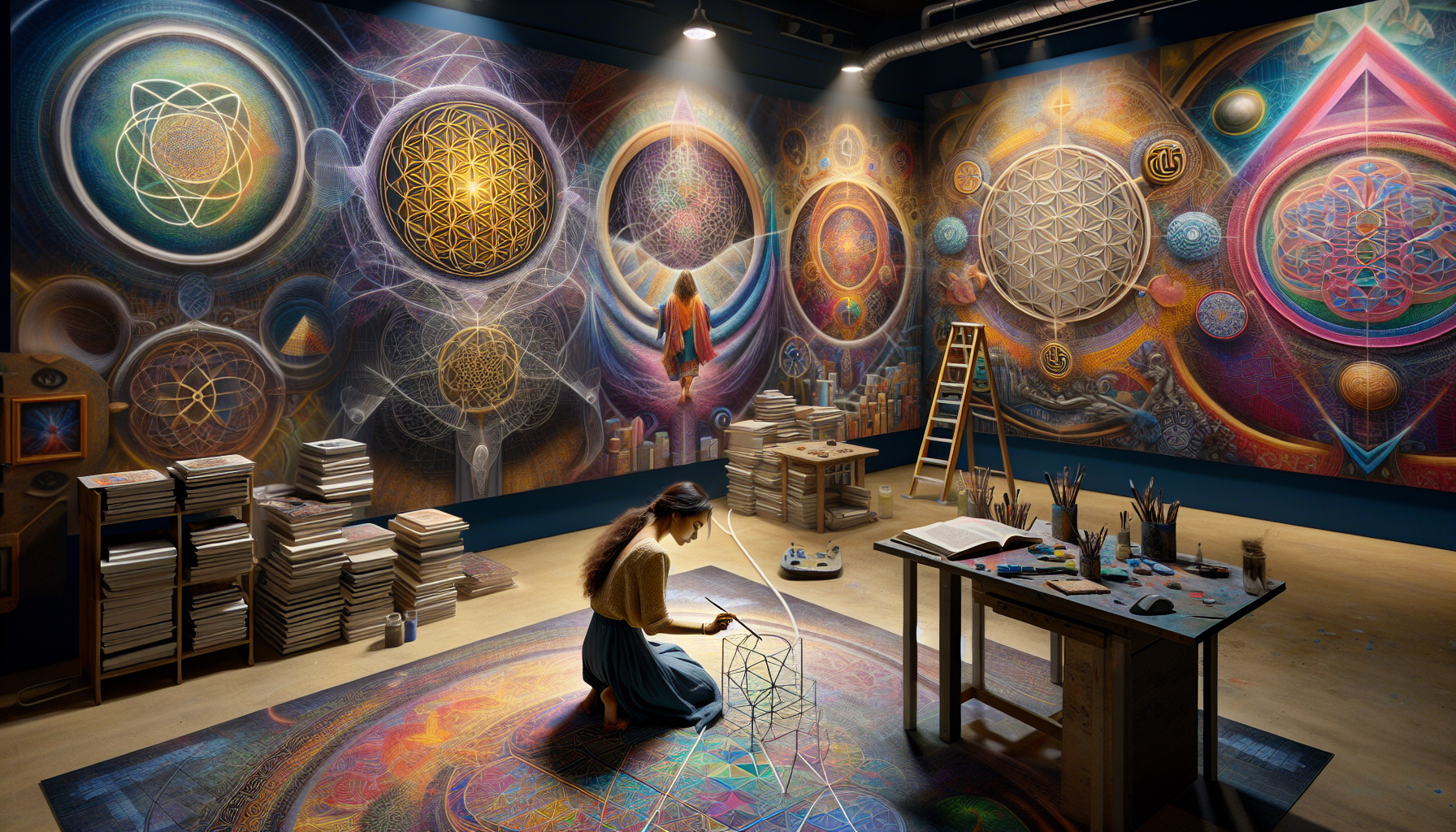
Conclusion
Creating a meaningful conclusion for an article on “Unlocking the Power of Sacred Geometry: Discovering Proportions in Mural Art” offers an opportunity to encapsulate the profound exploration into this ancient and continuously relevant subject. Sacred geometry, with its roots in history and spirituality, has been a tool for artists, mathematicians, and philosophers alike, providing a framework that bridges the tangible and the ethereal. This topic invites us to delve into the intricacies of geometry and its application in art, particularly murals, which serve as vast canvases for expressing these age-old principles.
Throughout the article, we journeyed through the historical context of sacred geometry, highlighting its significance in various cultures and epochs. From the Pyramids of Egypt to the intricate patterns of Islamic art, these geometric principles have transcended time and geography, reminding us of the universal language of mathematics. Murals, being one of the most publicly accessible forms of art, harness these principles to create immersive and harmonious spaces that captivate and inspire.
We examined the fundamental elements of sacred geometry, such as the Golden Ratio, the Fibonacci sequence, and the Platonic solids, to understand their application in creating balance and aesthetic appeal in mural art. These elements are not merely mathematical; they embody a philosophy of interconnectedness and harmony with the universe. By integrating these into mural art, artists can evoke a sense of order and beauty that resonates on both a conscious and subconscious level with viewers.
The article also delved into modern applications of sacred geometry in mural art, illustrating how contemporary artists incorporate these ancient principles to address themes of unity, spirituality, and environmental consciousness. Murals become not just art but messages, urging us to reconnect with nature and each other. This synergy of geometry and artistry provides a transformative experience, encouraging observers to reflect on their place within the larger cosmos.
Reinforcing the importance of this theme, it becomes clear that sacred geometry is more than an artistic tool; it is a lens through which we can view the world and our relationship with it. As we navigate an increasingly complex and fragmented world, the principles of sacred geometry remind us of the underlying order and connectivity that exist in nature and art. Embracing these principles in mural art allows us to foster environments that promote peace, reflection, and inspiration.
As we conclude this exploration, we encourage you, the reader, to engage with these ideas in your daily life. Whether you are an artist, a mathematician, or simply someone who appreciates the beauty of the world, consider how sacred geometry can influence your perception and creativity. Share this article with those who might find inspiration in the intricate dance of shapes and proportions. Comment on your thoughts or experiences with sacred geometry, and let us build a community of like-minded individuals who see the world through this profound lens.
Inspire yourself to create or seek out murals that embody these principles, and witness how they transform spaces and evoke a sense of unity and peace. Remember, sacred geometry is not confined to the walls of galleries; it is all around us, waiting to be discovered and appreciated. 🌟
For further reading and exploration, consider visiting these resources:
1. Introduction to Sacred Geometry
2. The Golden Ratio: A Guide to Its Application in Art
3. Modern Murals and Sacred Geometry
Let this article be a stepping stone into the vast and intricate world of sacred geometry. May it inspire you to see the beauty in proportions and the art of murals, as well as in the everyday patterns that make up our lives.
Toni Santos is a visual storyteller and sensory artisan whose work explores the ancient aesthetics of the senses—how early cultures designed their environments not just for function, but for emotional, spiritual, and sensory harmony. Through thoughtful visual interpretations, Toni revives a world where every texture, scent, color, and sound was part of a deeper design for inner balance.
Guided by a passion for the subtle intelligence of ancient spaces—from meditative gardens to sacred interiors—Toni’s creations reflect the intentional artistry once used to align body, spirit, and surroundings. Whether studying the calming patterns of Mesopotamian textiles or the acoustic geometry of forgotten sanctuaries, his work invites modern audiences to rediscover the sensory wisdom of the past.
With roots in handcrafted design and symbolic research, Toni brings together material culture, ritual aesthetics, and environmental intuition. His art does more than depict—it restores a dialogue between the senses and the soul, rooted in time-tested principles of well-being.
As the guiding force behind Vizovex, Toni shares curated visuals, reflective essays, and timeless design stories that invite others to reconnect with the aesthetic languages of ancient harmony.
His work is a tribute to:
The sensory intelligence of ancestral environments
The use of beauty as a tool for spiritual and emotional balance
The ancient belief in harmony between people, nature, and space
Whether you’re a designer, a historian, or a seeker of inner stillness, Toni welcomes you into a world where the senses are sacred, and where ancient beauty whispers through space, rhythm, and form—one texture, one echo, one breath at a time.


